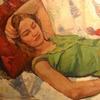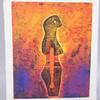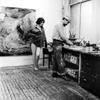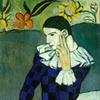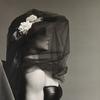Bruegel Blockbuster Offers Rare Look at 90 Works Together by the 16th-Century Master
- VIENNA, Austria
- /
- October 02, 2018
From October 2 to January 13, 2019, the Kunsthistorisches Museum in Vienna presents the first-ever major monograph show dedicated to the greatest Netherlandish painter of the sixteenth century: Pieter Bruegel the Elder (c. 1525/30‒1569). The exhibition commemorates the 450th anniversary of his death.
During his lifetime, Pieter Bruegel the Elder was already among the period’s most sought-after artists, with his works achieving exceptionally high prices. Only about forty paintings and sixty prints by him are all that has come down to the present day. The twelve panels in the Kunsthistorisches Museum are by far the largest collection of Bruegels in the world, a fact owed to 16th century Habsburg connoisseurs who already appreciated the exceptional quality of his works and strove to acquire these prestigious paintings.
Bruegel revolutionised landscape and genre painting, and his compositions continue to elicit varied and controversial interpretations. The depth and breadth of his pictorial world and
the perceptive powers of observation he employs in his depictions of quotidian life continue to fascinate all who encounter his works.
Museums and private collectors count Bruegel’s works among their most precious and fragile possessions. Most of the panels have never been loaned for an exhibition. By bringing together over 90 works by the master, the exhibition in Vienna has assembled for the very first time a comprehensive overview of Bruegel’s oeuvre: comprising around 30 panel paintings (i.e. threequartersof extant paintings) and almost half of his preserved drawings and prints, the show offers visitors a once-in-a-lifetime opportunity to immerse themselves in the artist’s complex pictorial world, to study his stylistic development and his creative process, and to get to know his method of work, his pictorial humour and his unique narrative powers.
The highlights in the exhibition include, for example, The Haymaking from the Lobkowicz Collections, Prague, View of the Bay of Naples from the Galleria Doria Pamphilij in Rome, Two Monkeys from the Staatliche Museen zu Berlin, The Triumph of Death from the Prado in Madrid, Dulle Griet from the Museum Mayer van de Berg in Antwerp, The Tower of Babel from the Museum Boijmans Van Beuningen in Rotterdam, The Adoration of the Magi in the Snow from the Collection Oskar Reinhard 'Am Römerholz' in Winterthur, The Adoration of the Magi from the National Gallery in London, the drawings The Beekeepers from the Staatliche Museen zu Berlin, and The Painter and the Connoisseur from the Albertina in Vienna.
Bruegel’s works will be arranged both chronologically and by theme, allowing visitors to study and appreciate his stylistic development and the impressive variety of his oeuvre. The
galleries will showcase both his masterpieces and series and groups reunited for the first time in centuries; in the smaller adjoining rooms we present the findings of recent comprehensive technological analyses, offering profound insights into the works’ evolution. We look at both Bruegel’s artistic beginnings as a draughtsman and graphic artist, and his innovations and vital contributions to the evolution of landscape painting.
One section of the show will focus on his religious works, bringing together numerous masterpieces including The Triumph of Death and Dulle Griet, both especially restored for this exhibition For the first time, Christ carrying the Cross, his largest panel and one that has also retained its original format, will be on show unframed and displayed so that both its back and front are visible – as though visitors were looking over the painter’s shoulder, seeing and appreciating the fragility of the wooden support and how it was constructed, and the outstanding quality of handling and paint layer, their perfection being one of the reasons Bruegel’s paintings have survived four and a half centuries.
A smaller room showcases works featuring a wealth of miniaturelike details and looks at Bruegel’s training as a miniaturist; its focal point will be the first-ever confrontation of both depictions of The Tower of Babel since they were in the collection of Emperor Rudolf II.
A selection of contemporary artefacts depicted in Battle between Carnival and Lent invites visitors to appreciate the wealth of details included in these compositions, to comprehend the meaning of the individual scenes, and to appreciate Bruegel’s unrivalled skill in capturing the material quality of depicted objects. We also question the painting’s traditional moralistic interpretation and showcase Bruegel’s perceptiveness as a social critic. Using Winter Landscape with a Bird Trap and Massacre of the Innocents as our starting point, we look at Bruegel and his workshop.
The final gallery presents Bruegel’s late works, offering a nuanced look at the artist long called 'Peasant Bruegel'. In addition to Peasant Wedding and Peasant Dance, the show includes his 'legacy-painting' The Magpie on the Gallows. The show’s final highlight is the first-ever juxtaposition of The Birdnester and the monumental drawing The Beekeepers.
Even after the exhibition ends, a free website www.insidebruegel.net will for the first time offer profound insights into the paintings of Pieter Bruegel the Elder based on the most recent technological analyses of his works. Here visitors can interact with the master’s pictures using state-of-the-art technology, navigate the collection and study Bruegel’s complex pictorial world in unrivalled detail.

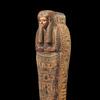






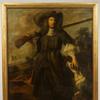
_Infinity_by_Santiago_Medina_PhotoCr100x100_c.jpg)

